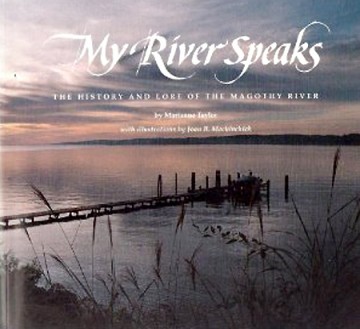What’s with That?
“What on earth does Magothy mean?” asked a guest as we walked down to the river by my Pasadena home.
“It’s the name of the river,” I explained.
“But what is it? Is it a person? Or a special word?” persisted my curious guest.
It was a mystery.
I spent 27 years living along the banks of the Magothy River, and not once had I questioned the origin of the name. It was just the river.
Well that’s not good enough anymore.
My first source was, of course Google, which resulted in lots of pretty pictures, a few associations and no answers.
Time to pull out the big guns. I called the Ann Arrundell Historical Society.
“This is a little involved,” explained researcher Mark Schatz. “Magothy comes from an Indian name, as do most of the river names on this side of the Bay, like the Patuxent. But there’s more to the meaning.”
He was right.

Schatz directed me to Marianne Taylor’s My River Speaks, a detailing of the Magothy’s lore and history as compiled by a retired teacher.
According to Taylor, the name is taken from a Native American word megä,timäguke, which roughly translates to a wide plain without timber.
Last time I checked, dozens of trees grew down to the water of the Magothy. Trees have always been my favorite feature of the river.
Taylor explained that, as with many places in history, the river has evolved over time. Commonly, Native Americans would burn sections of forest down for better hunting or farming. This might explain why the river was associated with timber-free banks. It could also be the reason that Captain John Smith classified the river as uninhabited when he passed in 1608.
Smith wouldn’t have a hard time spotting the inhabitants now, as houses line both sides of the river. But as I look over the Magothy — it’s too cold for even a native Marylander to sit on a pier right now — it’s nice to know a little more about its name.
Even if I can’t pronounce megä,timäguke.
What are you wondering about? Send your inquiries to Diana Beechener at [email protected].
